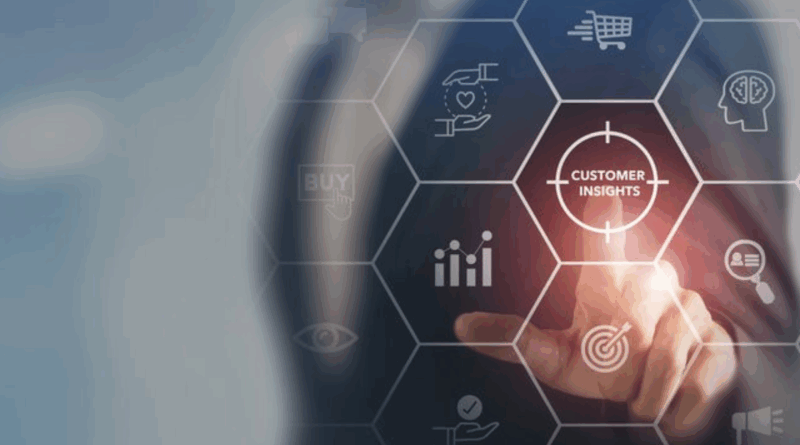From Data to Loyalty: Transforming Customer Insights into Growth
Introduction
In today’s digital economy, data has become the foundation of business success. Companies no longer rely solely on intuition to make decisions. Instead, they harness customer data to understand behavior, preferences, and expectations. When businesses effectively transform this data into actionable insights, they can improve customer engagement, increase satisfaction, and ultimately build loyalty that drives long-term growth.
This article explores how organizations can turn customer insights into strategies that foster loyalty and sustainable business expansion.
The Importance of Customer Insights
Customer insights are derived from analyzing customer data, including purchase history, feedback, browsing behavior, and demographic information. These insights provide businesses with a deep understanding of what customers want and how they interact with products or services.
Why Customer Insights Matter
- Personalization: Tailored offers and recommendations increase customer satisfaction.
- Retention: Understanding pain points helps prevent churn.
- Innovation: Insights reveal gaps in the market, leading to new product ideas.
- Efficiency: Businesses can optimize marketing campaigns and reduce wasted spend.
From Data Collection to Action
Collecting data is just the first step. Businesses must analyze and translate raw information into meaningful actions.
Data Collection Sources
- Transaction Data: Purchases, order frequency, and spending patterns.
- Behavioral Data: Website visits, app usage, and social media engagement.
- Feedback & Surveys: Reviews, ratings, and direct feedback.
- Demographic Data: Age, location, gender, and income level.
Analyzing Data for Insights
Advanced analytics tools, machine learning models, and customer data platforms (CDPs) help identify patterns. For example:
- Predicting future purchases.
- Identifying at-risk customers likely to churn.
- Segmenting customers into groups for targeted marketing.
Building Customer Loyalty Through Data-Driven Strategies
Personalization as the Key to Loyalty
Personalization is no longer optional—it’s an expectation. According to industry studies, customers are more likely to stay loyal to brands that recognize them as individuals.
Tactics for Personalization
- Personalized product recommendations.
- Customized email campaigns.
- Location-based offers.
- Personalized loyalty rewards.
Creating Seamless Customer Experiences
Data allows businesses to improve every touchpoint in the customer journey.
- Omnichannel Integration: Ensure consistency across in-store, online, and mobile platforms.
- Frictionless Checkout: Reduce cart abandonment with simplified checkout processes.
- Customer Support Insights: Use chatbots and AI to provide instant, personalized support.
Loyalty Programs Built on Insights
Traditional loyalty programs that reward only repeat purchases are evolving. Today, loyalty programs use data to encourage holistic engagement.
Modern Loyalty Strategies
- Reward customers for writing reviews, sharing content, or referrals.
- Use tier-based programs to make customers feel valued.
- Provide experiential rewards, such as early access or VIP events.
Turning Insights into Business Growth
Predictive Analytics for Growth
By forecasting trends, businesses can stay ahead of customer needs. Predictive analytics uses historical data to anticipate future behavior, enabling proactive strategies.
Examples:
- A streaming service predicting what shows a customer will enjoy.
- A retailer forecasting demand for seasonal products.
Cross-Selling and Upselling Opportunities
Data helps identify opportunities for upselling (encouraging higher-value purchases) and cross-selling (suggesting complementary products). For instance, a customer buying a smartphone might also be offered accessories like headphones or a protective case.
Reducing Churn with Proactive Retention Strategies
Insights reveal warning signs of disengagement, such as decreased activity or negative feedback. Businesses can use this knowledge to:
- Offer exclusive discounts.
- Send personalized re-engagement emails.
- Address complaints before they escalate.
Overcoming Challenges in Data-Driven Loyalty
Data Privacy and Trust
Customers are more aware of how their data is used. Companies must prioritize transparency, comply with data protection laws, and assure customers that their information is secure.
Integrating Data Silos
Many organizations struggle with fragmented data stored across departments. Unified platforms are essential to create a single view of the customer.
Balancing Automation with Human Touch
While AI and automation are powerful, businesses must ensure customer interactions remain authentic and empathetic.
Case Study Examples
Retail Sector
A global fashion retailer used purchase history and browsing behavior to personalize recommendations. The result was a 30% increase in repeat purchases and higher customer satisfaction scores.
Hospitality Industry
A hotel chain used guest preferences (room type, dining choices, past feedback) to provide customized experiences, leading to improved loyalty and increased bookings.
E-commerce Platforms
By analyzing abandoned carts, an e-commerce company sent targeted reminders with small discounts, recovering 20% of lost sales.
Future Trends in Customer Insights and Loyalty
- AI-Powered Personalization: Smarter algorithms to tailor experiences in real-time.
- Emotional Analytics: Understanding customer emotions through voice and text analysis.
- Hyper-Personalized Loyalty Programs: Programs that adapt dynamically to individual customer behavior.
- Sustainability-Driven Loyalty: Customers rewarding eco-friendly and ethical brands with loyalty.
Also Read : How Businesses Can Master Customer Connections in 2025
Conclusion
Transforming data into loyalty is not just about technology—it’s about building trust and meaningful relationships. Companies that leverage insights to personalize experiences, create seamless interactions, and reward engagement will not only retain customers but also drive long-term growth.
The future belongs to businesses that can balance innovation with authenticity, using customer insights to create loyalty strategies that resonate on a human level.
FAQs
Q1: What are customer insights?
Customer insights are actionable understandings of customer behavior, preferences, and needs derived from analyzing data such as purchase history, feedback, and engagement patterns.
Q2: How can businesses collect customer data?
Data can be collected through purchase transactions, website activity, surveys, social media engagement, and customer service interactions.
Q3: Why is personalization important for loyalty?
Personalization makes customers feel valued, increasing satisfaction and retention. Personalized recommendations and offers often lead to repeat purchases.
Q4: How do loyalty programs benefit from customer insights?
Insights allow businesses to design loyalty programs that reward not only purchases but also engagement, such as referrals and reviews, making programs more effective.
Q5: What are the biggest challenges in using customer data?
Challenges include ensuring data privacy, integrating fragmented data systems, and maintaining a human touch despite automation.

